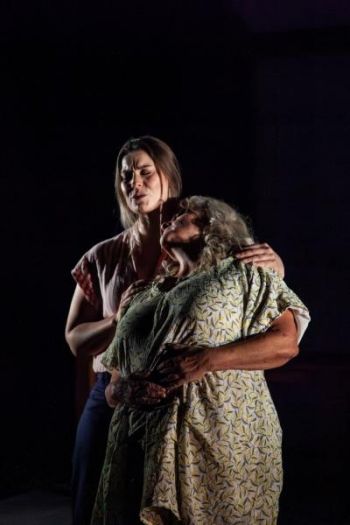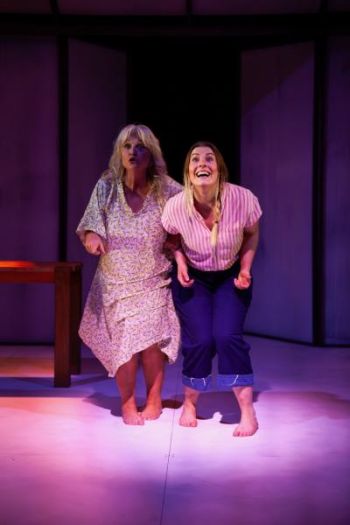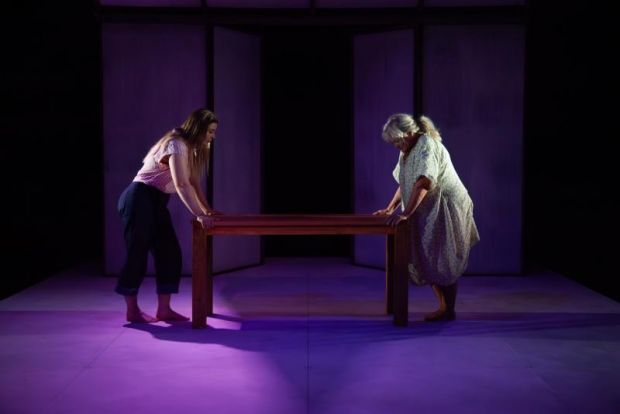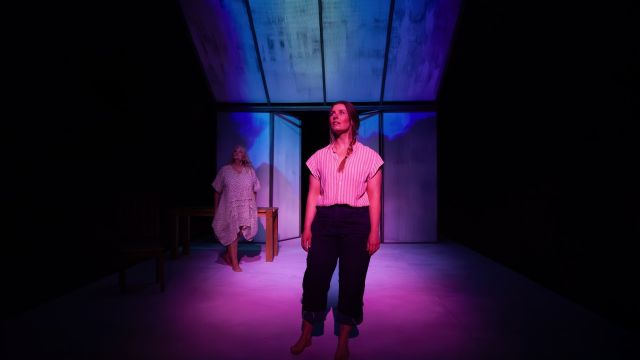Wittenoom
Sometimes a production is so creatively concise and fascinating in content; so invigorating in performance and so evocatively staged, it’s difficult to know where to start with a review - especially when the subject matter is so important. The inescapable fact is, it would be remiss of me not to extrapolate on the subject matter depicted in the play.
The incredible truth being that the toxic fallout experienced in the ‘former’ asbestos mining town of Wittenoom - remains to this day, even though the mine was closed in 1966.
 I contemplated adding a bunch of information obtained via articles published by the ABC and The Guardian, but that would take up too much space. I will instead inform you they exist and encourage you to have at it (google, that is).
I contemplated adding a bunch of information obtained via articles published by the ABC and The Guardian, but that would take up too much space. I will instead inform you they exist and encourage you to have at it (google, that is).
Because it’s not enough simply to know that the piece of art that is this brilliantly written play is based on a true story, it needs to be more commonly known that the mining town of Wittenoom is STILL the largest existing contamination site in the southern hemisphere.
The haphazard, yet deliberate dumping of asbestos waste was responsible for over 2000 deaths (and counting) is tragic enough, but the despicable fact is: the endless passing of the buck, regarding exactly whose responsibility it is to clean up the mess, continues to this day.
The unexpected impact of the aforementioned articles, is that they are populated not just with aerial photos of toxic sludge, but also with genuinely heartwarming black and white images from the 1930s to the 1960s, of joyful, communities and happy families with beaming children. To wit: as recently as 2022, the last person to be relocated from the town of Wittenoom, did not want to leave.
The human element of this ongoing story is the very definition of the word ‘dichotomy’.
Which brings me to the play, which was brought to life by two companies, featuring two actors (giving compelling, measured performances) on a set consisting of two pieces of furniture: a chair and a table. And yet, thanks to a deceptively compact, partially translucent backdrop, precision lighting, a subtle, yet portentous soundscape and transformative movement, the production bursts at the seams with implied imagery.
 Likewise, the script is part straightforward dialogue/part evocative prose, performed both consecutively and simultaneously. ‘Mesmerising’ is an overused word. It was truly hypnotic.
Likewise, the script is part straightforward dialogue/part evocative prose, performed both consecutively and simultaneously. ‘Mesmerising’ is an overused word. It was truly hypnotic.
My admittedly ’senior’ brain was initially disoriented by the occasional overlap of dialogue, but within seconds my overall perception not only relaxed and adjusted, it was absolutely invigorated. Art yoga for the frontal lobes…and thus, my definition of symmetry has expanded.
This is due in no small way to consummate performances from Kerri Gay and Grace Roberts, who portrayed their intertwined mother/daughter/narrator roles with deceptive ease. The publicity material describes the spoken word aspect of this production as ‘operatic’ but thanks to movement consultant, Rikki Mace, it also proceeds apace with a balletic poise.
In short, every creative component of this piece paints such vivid mental imagery that I’m still registering just how much was achieved with two actors, a chair and a table.
And, just as with happy snaps from the above mentioned articles, the narrative is concurrently comedic and heart-wrenching in equal measure. Playwright Mary Anne Butler to be congratulated. I’m absolutely in awe of what is undoubtedly the most symbiotic of collaborations. Which brings me to the mission statement that defines the meshing of these two theatre companies.

“Mudlark and IO are united in our mission to share untold stories and to make bold, surprising theatre for our audiences. We want to produce plays that entertain, comfort and connect us, but also ones that are current, provocative and risky.”
Mission accomplished.
Rose Coper
Image credit: @eva.dudes
Subscribe to our E-Newsletter, buy our latest print edition or find a Performing Arts book at Book Nook.

